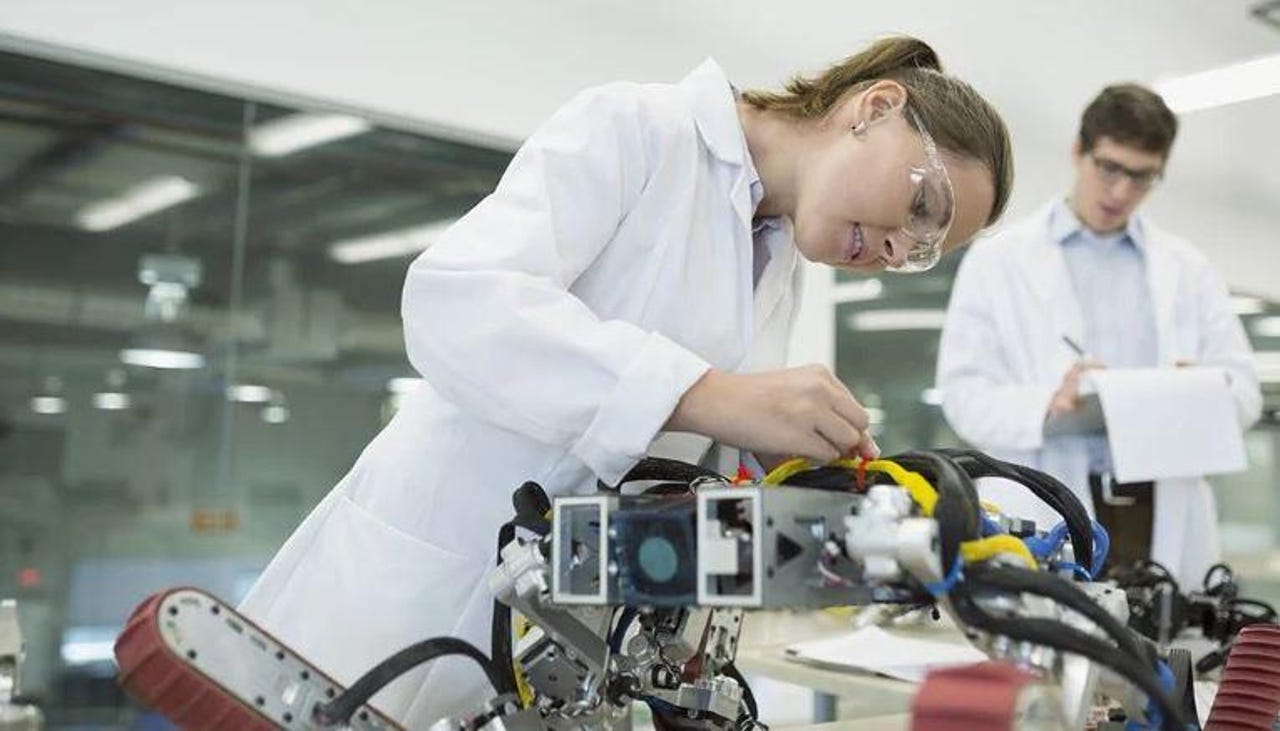Move over, Amazon: Microsoft has an autonomous systems and robotics strategy, too


Microsoft Build 201
It's going to be a big week for Amazon in the robotics and autonomous systems space, based on the agenda for the company's re:MARS conference in Las Vegas. But Amazon's not the only cloud vendor investing looking to establish a presence here. Microsoft has a number of commercial and research efforts happening in robotics and autonomous systems, as well.
While "autonomous" is often associated with self-driving vehicles, it also applies to situations where machinery can act with limited human assistance. Drone operation, equipment calibration, robotic inspection and other tasks are well-suited to autonomous operation. And by adding AI tech to the mix, systems performing these kinds of tasks potentially can become more than just rote and repetitive. They can adapt and adjust to changing situations.
Microsoft has been conducting research in related to autonomous systems area since at least 2008. It's only in the last couple of years or so that the company has been finding ways to bring this work to customers in the industrial systems and robotics arenas. Two years ago when I asked Microsoft about its renewed robotics focus, officials wouldn't comment. But things have changed. These days, Microsoft is publicly touting its work with autonomously operated drones and industrial robots. For Microsoft, this space is a perfect storm: It's an area where officials can talk up its intelligent cloud and edge work plus its artificial intelligence investments.
At Build 2019, Microsoft execs announced a "limited preview" of a piece of its autonomous systems tool chain. The company is seeking customers interested in test-driving its machine teaching and simulation technologies.
Machine teaching isn't a newly Microsoft-coined buzzword. The concept -- via which specialists in various vertical fields can teach AI systems on what's most important to focus -- has been around for a while. Microsoft acquired machine-teaching vendor Bonsai in 2018 to jump-start its already existing work in this space.
"We see a very natural transition in the journey to getting customers to work on autonomous systems. We already have automated systems powered by software and rules. And now we're seeing a transition to AI-powered systems that can sense the environment, adapt to changes, plan for an outcome and act on it," said Mark Hammond, Microsoft General Manager of Business AI and one of the founders of Bonsai, during an interview at Build 2019.
Microsoft has been emphasizing that it is not competing with its customers with its cloud strategy when pitting Azure vs. Amazon. And it's trying to take the same tack with autonomous systems by showcasing how it is providing users like Toyota, Schneider Electric and Sarcos robotics with these kinds of technologies rather than using them itself to create autonomous systems.
Is this all pie in the sky? Microsoft officials note that a number of pieces for these kinds of solutions are available already.
Microsoft currently sells AirSim, an open-source simulation tool, which can be integrated with Bonsai's machine-teaching technology. Reinforcement learning capabilities can be supplied by Azure Machine Learning Services. By using Azure cognitive services such as computer vision, companies can add capabilities like perception to the equation. And with the Azure IoT Edge service running on devices, smarts can be extended to devices at the edge.
Last year, Microsoft announced plans to bring a version of the Robot Operating System (ROS) to Windows 10, with its stated goal of bringing the intelligent edge to robotics. This year at Build, Microsoft announced the availability of ROS for Windows 10 IoT Enterprise.
Moving forward, Microsoft is working on an overall "software architecture for cloud-connected robots with hierarchical closed loop structures," according to a recent job description for a Microsoft Research position. The job posting notes the kinds of robots employing this type of framework would be able to learn from humans by watching them perform tasks.
"Over time, more IoT systems will become autonomous," Hammond said. And customers "will need the expert, not the data scientist, to bring these capabilities to light."